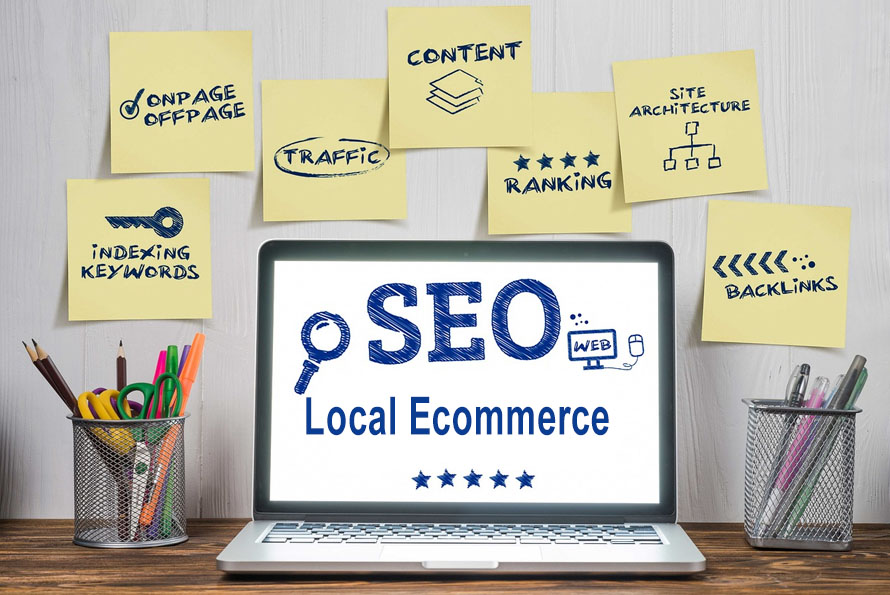 Larakart
Larakart
Your cart 0
Your Cart is Empty



You don’t need a massive marketing budget to rank higher in local search. Whether you're running an eCommerce store with local delivery or offering pickup services, you can boost your local SEO visibility using smart, low-cost (or free!) strategies.
In this guide, we’ll show you how to improve your local SEO without spending a lot—so you can reach more customers in your target locations and drive more sales.
Why Local SEO Matters for eCommerce
Local SEO helps your business appear in search results when nearby customers search for:
“Buy sneakers near me”
“Same-day delivery kitchenware in Chicago”
“Online pet food store Miami”
With the rise of “near me” searches and mobile shopping, local SEO has become crucial for eCommerce businesses with physical service areas, warehouses, or regional delivery.
10 Budget-Friendly Ways to Improve Your Local SEO
1.Claim and Optimize Your Google Business Profile (GBP)
Cost: Free
If you haven’t claimed your Google Business Profile, do it now.
Steps:
Visit google.com/business
Add accurate name, address, and phone (NAP)
Choose correct business categories (e.g., “Online Retailer,” “Delivery Service”)
Add products, services, photos, and your website link
Why it matters: GBP helps you show up in Google Maps and local search results—especially for mobile and “near me” queries.
2.Add Location-Specific Keywords to Your Website
Cost: Free
Include geo-targeted keywords on key pages like:
Homepage
Product categories
Local landing pages
Meta titles & descriptions
Example keywords:
“Organic skincare delivery in Austin”
“Same-day gifts in Brooklyn”
Use free tools like:
Google Keyword Planner
Ubersuggest
Google Autocomplete (“buy shoes in…”)
3.Create Local Landing Pages
Cost: Free (if you manage your own site)
If you serve different cities or regions, create dedicated location pages like:
yourstore.com/houston-fitness-gear/
yourstore.com/san-diego-home-decor/
Include:
Localized keywords
Customer reviews
City-specific delivery info
FAQs for that region
This tells Google your site is relevant for searches in that area.
4.Ask for Local Reviews from Happy Customers
Cost: Free
Reviews help with local SEO rankings and build trust.
How to get them:
Send a post-purchase email with a review request
Include a direct link to your Google Business Profile
Ask customers to mention the product and location
“Loved this planner! Fast delivery in Denver—thank you!”
Respond to reviews—even negative ones—to improve credibility.
5.Ensure NAP Consistency Across All Directories
Cost: Free (or DIY)
Your business Name, Address, and Phone number (NAP) should be the same everywhere online.
Check:
Google Business Profile
Yelp
Facebook Page
Bing Places
Local directories (YellowPages, Chamber of Commerce, etc.)
Inconsistent info can confuse Google and hurt rankings.
6.Write Local Blog Content
Cost: Free
Blogging about local topics boosts SEO and builds community relevance.
Ideas:
“Top 5 Gifts for Father’s Day in Atlanta”
“Why Our Handmade Soaps Are a Dallas Favorite”
“Fastest Delivery Services in Tampa for Home Essentials”
Use these posts to target long-tail keywords and link back to products.
7.Use Local Schema Markup
Cost: Free (or minimal dev help)
Schema helps search engines understand your location and services.
Add LocalBusiness schema to your homepage and landing pages using free tools like:
TechnicalSEO Schema Generator
Google’s Structured Data Markup Helper
This can help you appear in featured snippets and local packs.
8.Leverage Free Local Listings
Cost: Free
Submit your business to:
Yelp
Bing Places
Apple Maps
Hotfrog
Local industry directories
These listings provide valuable backlinks and improve your local authority.
9.Upload Photos with Local Tags
Cost: Free
Use original images (products, packaging, warehouse, team, etc.) and:
Name image files with keywords: sneakers-delivery-austin.jpg
Add descriptive ALT text with local keywords
Geotag images if possible
This helps with Google Image Search visibility—often overlooked!
10.Track Local SEO Performance with Free Tools
Use:
Google Search Console – see local search queries & page performance
Google Analytics 4 (GA4) – track users by location
Google Business Insights – see how people find and interact with your profile
Review performance monthly and adjust your content or keywords accordingly.
Final Thoughts
You don’t need to spend big money to see results with local SEO. By focusing on location-based content, NAP consistency, reviews, and keyword optimization, your eCommerce site can gain more visibility in the areas you serve.
With just a few smart steps, you’ll attract more nearby customers—organically and affordably.